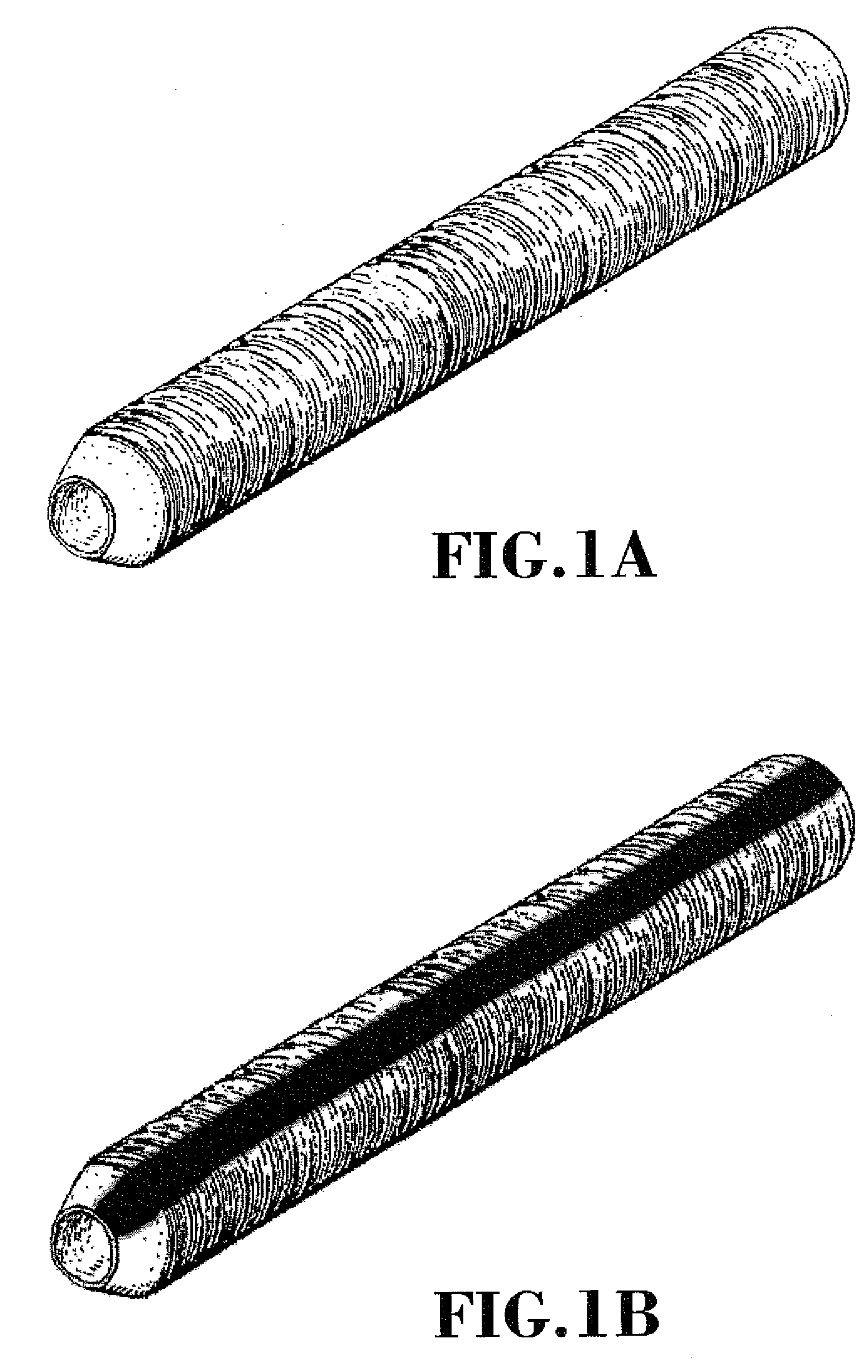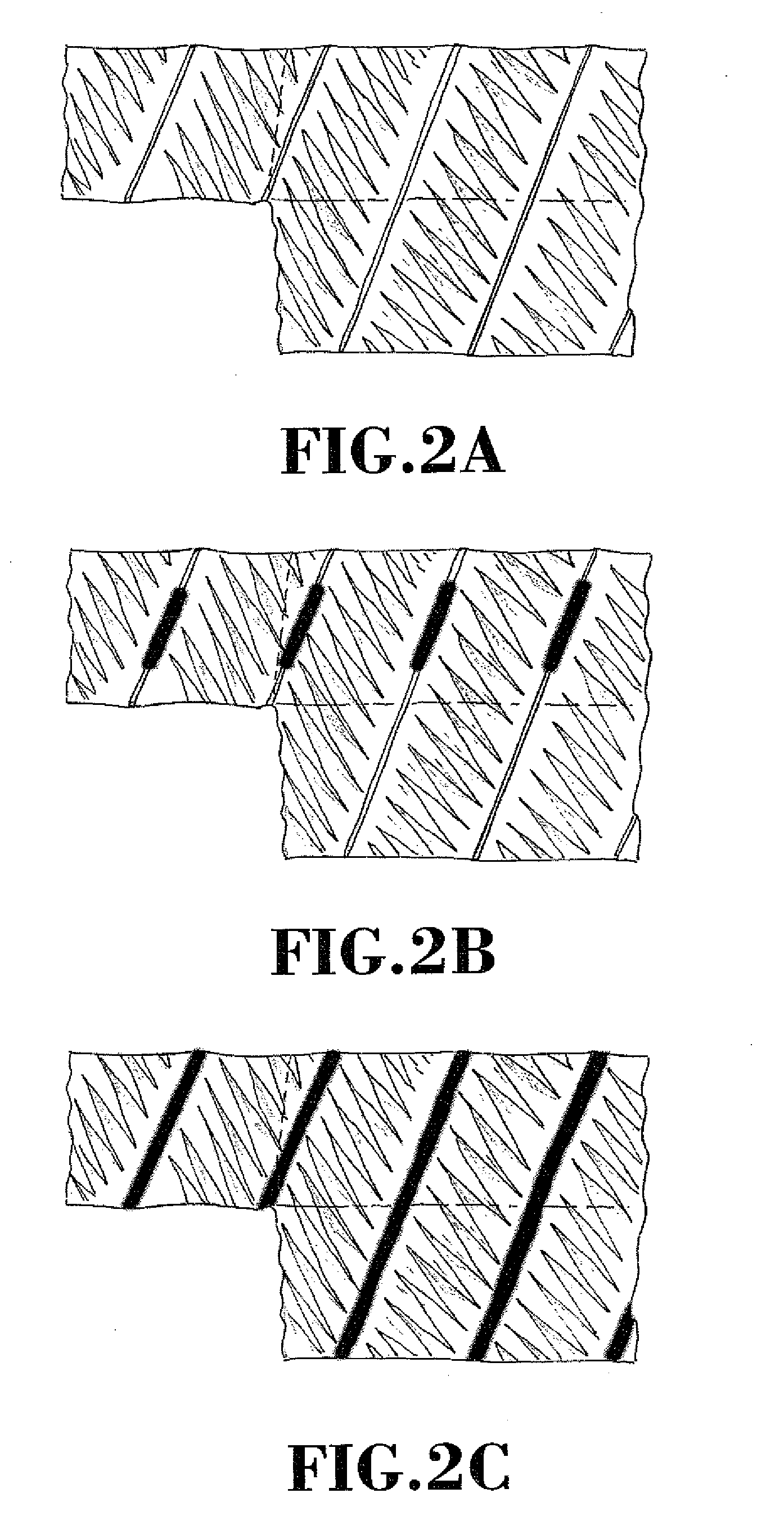Method for obtaining gut with marks and a meat product with marks, gut and meat products thus obtained
a technology of gut and meat products, applied in the direction of sausage casings with flavour impregnation, baking, containers, etc., can solve the problems of limited practical use and additional printing process
- Summary
- Abstract
- Description
- Claims
- Application Information
AI Technical Summary
Problems solved by technology
Method used
Image
Examples
examples of embodiment
OF THE INVENTION
Example 1
[0103]A band of liquid smoke (Red Arrow Smoke-EZ LFB Supreme) was impregnated on the outer surface of a pleated wrapping of cellulose casing with calibre 23 using a paintbrush. A piece of the pleated wrapping was unpleated to show that the casing had a spiral fold throughout its surface, which was marked at regular intervals in the areas where it had been impregnated with liquid smoke. The pleated wrapping was later stuffed with meat emulsion and sausages were manufactured with a standard cycle. The sausages produced with this casing had a repetitive pattern of elongated and inclined stains with respect to the longitudinal axis of the sausage, which is similar to the grill marks produced by applying a grilling process to the sausages.
example 2
[0104]A colouring composition was prepared which contained Maillose 60 (Red Arrow) with 1.5% methylcellulose (Methocel PA 125) and it was placed on a tray with a liquid depth of 2 mm. A pleated wrapping of cellulose casing with calibre 24 was deposited on the tray and the tray was made to rotate so that the entire outer surface of the pleated wrapping became impregnated. The pleated wrapping was removed and the excess liquid was eliminated with filter paper; the quantity impregnated corresponded to 140 mg of the colouring composition per linear metre of casing. The pleated wrapping was later stuffed with meat emulsion and sausages were manufactured with a standard cycle. The cellulose casing was then peeled off and discarded. The sausages produced had been marked by the Maillose diffused through the cellulose casing and had, throughout its surface, a continuous spiral mark similar to a “barber-pole”.
example 3
[0105]A colouring composition was prepared formed by Maillose 45 (Red Arrow) with 0.1% sodium carrageenan. The mixture was heated at 90° C. and then left to cool, until attaining a semi-solid consistency. A pleated wrapping of cellulose casing with calibre 24 was deposited on the colouring composition, so that a band was impregnated on the outer surface of the pleated wrapping, maintaining it during 60 seconds. The pleated wrapping was then removed and the sausages were processed with it. The sausages produced with this casing, has a repetitive pattern of elongated stains on the surface similar to grill marks. The marks were finer, sharper and more intense than those produced in Example 1.
PUM
| Property | Measurement | Unit |
|---|---|---|
| temperature | aaaaa | aaaaa |
| temperature | aaaaa | aaaaa |
| depth | aaaaa | aaaaa |
Abstract
Description
Claims
Application Information
 Login to View More
Login to View More - R&D
- Intellectual Property
- Life Sciences
- Materials
- Tech Scout
- Unparalleled Data Quality
- Higher Quality Content
- 60% Fewer Hallucinations
Browse by: Latest US Patents, China's latest patents, Technical Efficacy Thesaurus, Application Domain, Technology Topic, Popular Technical Reports.
© 2025 PatSnap. All rights reserved.Legal|Privacy policy|Modern Slavery Act Transparency Statement|Sitemap|About US| Contact US: help@patsnap.com



